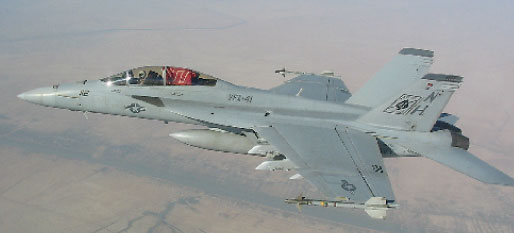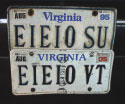Change not always for the better
I have been re-reading the Virginia Tech Magazine for Fall 2003, especially the article on the identity of Virginia Tech. This "Old Guard" of 1943 happens to like the maroon and orange very much. It is distinctive and much more of an identity factor than something so prosaic as, say, blue and white. I really do not care what Burt Reynolds thinks of it. Is his garnet and gold much better? I think not. My real choice would be a return to an honest maroon, though--the present football uniforms are so dark that they look almost black or purple on the field. Same for basketball.
"Virginia Tech" is a fine name; let's leave it alone. The "VT" logo has become quite well known and is easily recognized, as is the name. It is a great change for those of us who suffered in silence for so many years because nobody knew who we were. I am really not thrilled with the stylized version of the Gobbler mascot in use for the last few years; it is too hard to identify. The old bird from the '40s really had character.
Thank you for hearing my comments, but above all, please do not allow anyone to get on a campaign to change the colors from maroon and orange.
William R. Brunyate '43
Marietta, Ohio
From the heart of Texas
Regarding your article on "Tech and UTA..." in the Winter 2004 edition of Virginia Tech Magazine [page 6], the acronym "UTA" is erroneously used for (capitalize the "T") The University of Texas at Austin. I am a 1967 graduate of UT, but my son is a sophomore at VT ("Go Hokies"), and I wanted to correct this reference to my alma mater. According to my sometimes-official Texas Dictionary, The University of Texas at Austin may be referred to as "UT," "UT Austin," "Texas," or simply "The University." The acronym "UTA" is reserved for UT Arlington, another member of The University of Texas System, located in a suburb of the Dallas-Fort Worth metroplex.
Bill Barnett
Dallas, Texas
|
|
|
Hokie, Hokie, Hokie--high in the sky
Who's got spirit? Lt. Chad Underwood (biology '98), even when aloft over Southern Iraq. Underwood, a member of the Navy's VFA-41 Black Aces squadron, piloted the F/A-18F Super Hornet during his deployment in Iraq early this year. When fellow pilot Kevin Aanestad (aerospace engineering '92) received a VT flag from his wife, Underwood says the pair saw it as an opportunity to take their Hokie pride to the skies. "Serving my country and flying the F-18 has been one of the greatest honors and thrills imaginable," Underwood says, "but I’m just as proud of being a Hokie."
|
|
|
|
 |
|
|
|
|
|
|
More merited alumni
We were excited to see the acknowledgments for Torgersen Hall and its recent design award achievements [Winter 2004, "Torgersen Hall receives design awards," page 5]. The building's recognition is well deserved. However, we noticed that several other firms other than SFCS, Inc. were not credited with having made substantial contributions to the building's design, including Anderson & Associates; Girard Engineering, Mechanical, Electrical, and Plumbing Engineers; and Escoff & Associates Architects, Design Architects. These firms all employ Virginia Tech alumni who were proud to work on a building for their alma mater. Also, our firm, Escoff & Associates Architects, was responsible for submitting [the] Torgersen Hall [project] to the AIA D.C. Chapter Awards, where it won an Award of Merit.
Because Virginia Tech is a world-class institution and strives to be viewed as such, it should take pride in the achievements of its alumni. These achievements enhance the university's reputation for excellence and exemplify the fact that graduates of Tech succeed in their respective professions, whatever they may be.
Karen M. Conkey '95
Laurent de Comarmon '95
Washington, D.C.
Other solutions for mad cow disease
I was disappointed to read the news item, "Researchers hope to clone disease-resistant cattle" in the Spring 2004 issue. I am a 1984 chemistry and 1985 environmental engineering graduate. How sad to see $300,000 go towards research to clone a cow that would be genetically incapable of developing mad cow disease. Cloning represents a great deal of suffering for animals because of various deformities that occur. Every "successfully" cloned animal follows the suffering of several, dozens, or hundreds of animal lives representing failed cloning. This sum of money is a drop in the bucket for genetic research, yet could really accomplish a great deal if spent on education and testing. Last year the U.S. tested a little under 20,000 cows out of a population of 96 million. That's less than Europe tests every day.
Perhaps we can follow the K.I.S.S. (keep it simple, stupid) principle and actually stop giving herbivores feed that contains all kinds of ground-up animals. Although the U.S. passed a law in 1997 prohibiting the feeding of ruminant to ruminant, the law still allowed for the feeding of pigs and horses to cows. Cattle remains could still be fed to pigs and chickens, and their remains could be fed back to cattle. The no-brainer (excuse the prion-related pun) law isn't always followed or enforced. Some federal officials, such as Dr. Paul Brown, medical director for the U.S. Public Health Service, believe that pigs and poultry could harbor mad cow disease [and perpetuate it].
Perhaps we, as consumers, could make more sustainable, compassionate, and effective choices to avoid mad cow disease by supporting our local organic farmers or by adopting a vegan (consuming no animal products) lifestyle. And perhaps the Virginia-Maryland Regional College of Veterinary Medicine could practice a little more of the Hippocratic oath and focus on research that does no harm to animals.
Kelly Beard-Tittone '84, '85
Grandview, Mo.
Lost in translation
[In regard to the caption for the Spring 2004 article "Enter the disease detective," page 22], with her left thumb applying pressure to the jugular vein and a syringe full of blood, it is highly unlikely that Dr. McQuiston is administering a rabies vaccine. [As a D.V.M.], to my trained eye, she is drawing a blood sample from what appears to be a raccoon!
Except for this blooper, it was a nicely written article.
Mimi R. Moore '85
Thomaston, Maine
Editor's note: Good eye! The original caption from McQuiston reads, "[This] is a photograph taken in 2000 in Fairfax, Va., where I assisted with a serologic evaluation of raccoons following distribution of an oral rabies vaccine bait for these animals." Somewhere during the issue-production process, however, we botched it. We apologize for the error and any confusion it may have caused.
 Eye-catching plates Eye-catching plates
I not only enjoyed the letters to the editor about the naming contest held in 1979 but still enjoy the contest results every day. As a student during that time, I was able to keep track of and participate in the whole naming contest. I still fondly remember U.Va.'s "Old MacDonald" halftime tribute to VT, which was made not once but several times. I have included some pictures of various license plates that I have owned since 1986. I cannot tell you how many stoplight conversions have started with "I'll bet you went to Tech" or "Did you hear the one about the farmer?" because of these tags.
The bottom tag is still in active use and, naturally enough, it can be seen on my truck running around Richmond, Va. Thanks again for rekindling those memories.
J.J. Daniel '78
Richmond, Va.
|